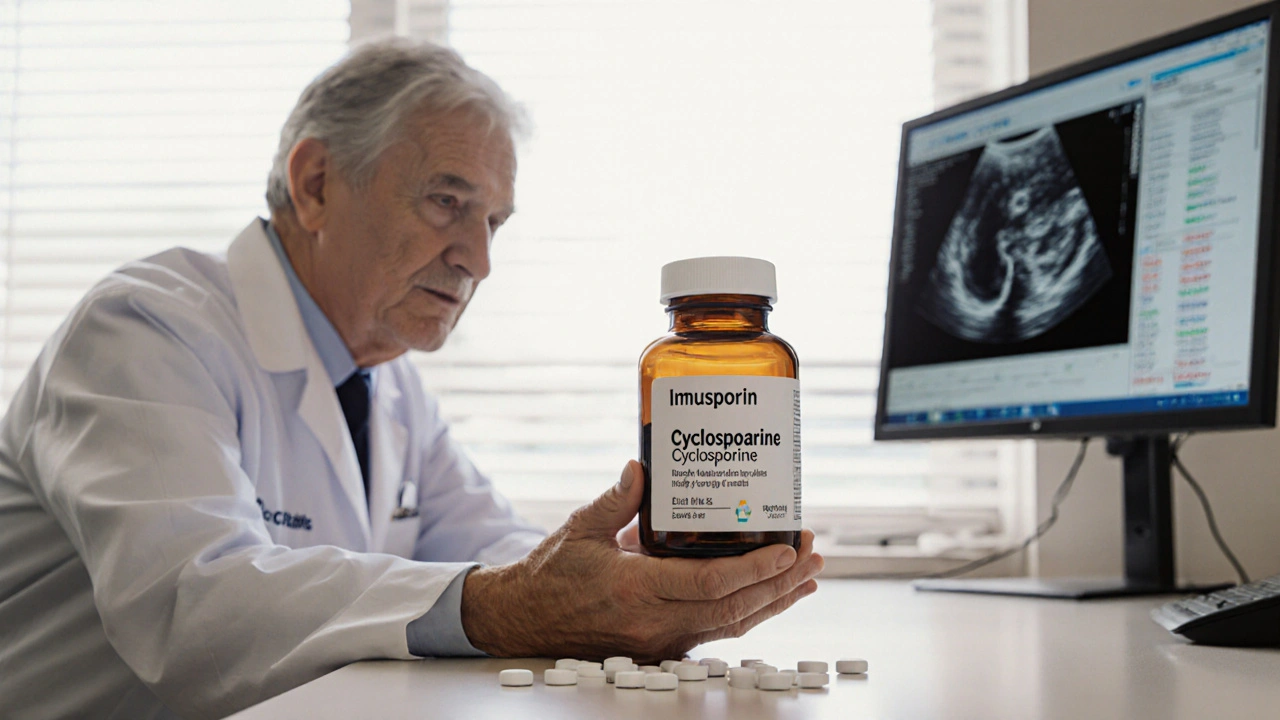Mycophenolate – What It Is, How It Works, and What You Need to Know
When working with mycophenolate, an oral immunosuppressive drug that blocks the proliferation of T‑ and B‑lymphocytes. Also known as CellCept, it helps keep the immune system from rejecting a new organ or attacking its own tissues.
Why Mycophenolate Matters for Transplants and Autoimmune Conditions
Patients who undergo organ transplant, a surgical procedure to replace a damaged or failing organ with a donor organ rely on mycophenolate to lower the rejection risk. The drug is also a cornerstone in treating lupus, a chronic autoimmune disease where the body attacks its own connective tissues and other auto‑immune disorders like vasculitis. By dampening the immune response, it gives the transplanted organ or the body’s own tissues a chance to heal without constant flare‑ups.
Doctors often pair mycophenolate with other immunosuppressants such as azathioprine, a purine synthesis inhibitor used to further suppress immune activity or tacrolimus. The combination creates a balanced approach: mycophenolate handles lymphocyte proliferation while the companion drug tackles different pathways, reducing the dose needed for each and minimizing side‑effects.
Starting a mycophenolate regimen usually means a two‑times‑daily dose, taken with food to improve absorption and lessen stomach upset. Typical adult dosing for transplant patients ranges from 500 mg to 1 g per dose, while lupus patients might start at 1 g twice daily. Blood level checks aren’t routine for mycophenolate, but doctors monitor complete blood counts, kidney function, and liver enzymes regularly. Any drop in white blood cells or rise in creatinine signals the need to adjust the dose.
Side‑effects are often mild—nausea, diarrhea, and headache are common. More serious concerns include leukopenia, increased infection risk, and rare birth defects, so women of child‑bearing age must use contraception. Interactions with drugs like antacids, certain antibiotics, and cholesterol‑lowering meds can affect how mycophenolate works, so it’s crucial to keep a current medication list and discuss any new prescriptions with your healthcare provider.
Understanding mycophenolate, its role in organ‑preservation, and its place in autoimmune therapy helps you stay proactive about your health. Below you’ll find a curated list of articles that dive deeper into buying affordable generics, managing side‑effects, and navigating related medications—all aimed at making your mycophenolate experience safer and more affordable.

Cyclosporine (Imusporin) vs Common Immunosuppressant Alternatives - Detailed Comparison
A detailed side‑by‑side comparison of Imusporin (cyclosporine) with top immunosuppressant alternatives, covering mechanisms, dosing, side effects, and when to choose each.
More Detail